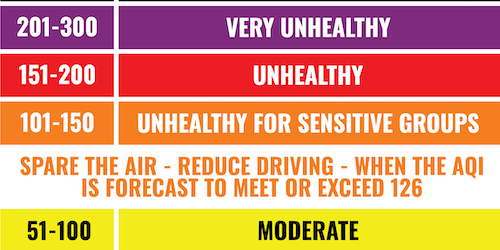Within the “EU4Climate” project, the Environment Agency Austria (EAA, Umweltbundesamt) has developed a “Concept for improving air quality monitoring in Armenia” based on requirements arising from the Comprehensive and Enhanced Partnership Agreement (CEPA) between the European Union and the Republic of Armenia. For this purpose, the analyses of the legal framework in Armenia for environmental monitoring were made alongside the mapping of air quality monitoring networks in the cities of Gyumri, Vanadzor, Alaverdi, Tsaghkadzor, Ararat, Charentsavan, Kapan, Kajaran. The recommendations for setting criteria for siting of monitoring stations, including traffic, industrial, urban and background sites, have been provided.
The CEPA sets key provisions relevant to the air quality monitoring concept such as the adoption of national legislation and designation of competent authorities, classification of zones and agglomerations, upper and lower assessment thresholds and limit values, systems for assessing ambient air quality of air pollutants and providing information to the public.
The assessment of the current state of environmental monitoring facilities shows that the status of the standards and calibration of instruments is not known yet but will be made available. The analysis of the current AQ monitoring station in Yerevan proves that there is a need for the replacement of some stations and the modernisation of buildings and infrastructure. Therefore, the Concept also includes the cost estimate for a pilot station in Yerevan.
The Concept also includes the cost estimate for a pilot station in Yerevan, including QA/QC and a description of parameters and costs for equipment and installations, sampling systems and analysers. For gravimetric analysis of PM filters, an air-conditioned weighing room is recommended as part of the laboratory needs.
For possible locations for pilot stations in Yerevan, the assessment of existing air quality stations in Yerevan, results of ongoing passive sampling of NO2 and SO2, topography, building densities, meteorology, traffic data, emission data could serve as information sources. Given that the existing AQ stations in Yerevan don’t completely fulfill the requested criteria, it is proposed that new locations should be found for the pilot station(s) to present more representative levels for AQ.
The main topics cover information on the database in HMC (the “Hydrometeorology and Monitoring Center” state non-commercial organization), the monitoring processes and data collection in automated and non-automated stations from 7 cities of Armenia (Yerevan, Gyumri, Vanadzor, Alaverdi, Hrazdan, Tsaghkadzor and Ararat), the used air quality parameters and measurement methods. The key conclusion is that further exchange at the operational level regarding IT personnel and details of technical capacities will be needed.
In terms of capacity building, HMC is at the beginning of implementing an automatic air quality monitoring network. In addition, the implementation of the necessary surrounding infrastructure such as the national reference laboratory is pending. Hence, capacity building (laboratory infrastructure, technical manpower, and management system) is required for the whole chain of air quality monitoring. This includes the required capacities for calibration and reference laboratories, for operation and maintenance of the monitoring stations, and data management.
For establishing an automatic ambient air quality network, it is recommended to apply a step-wise approach. The practical implementation depends on the decision to go ahead and funding being secured; it should start from the network infrastructure. As a first step (phase I), automatic monitoring of selected priority pollutants should start at one or two stations in Yerevan with the main purpose of training the staff to become familiar with the equipment, specifics of maintenance, etc. In the next step, further stations should be deployed in Yerevan and the surroundings (phase II).



